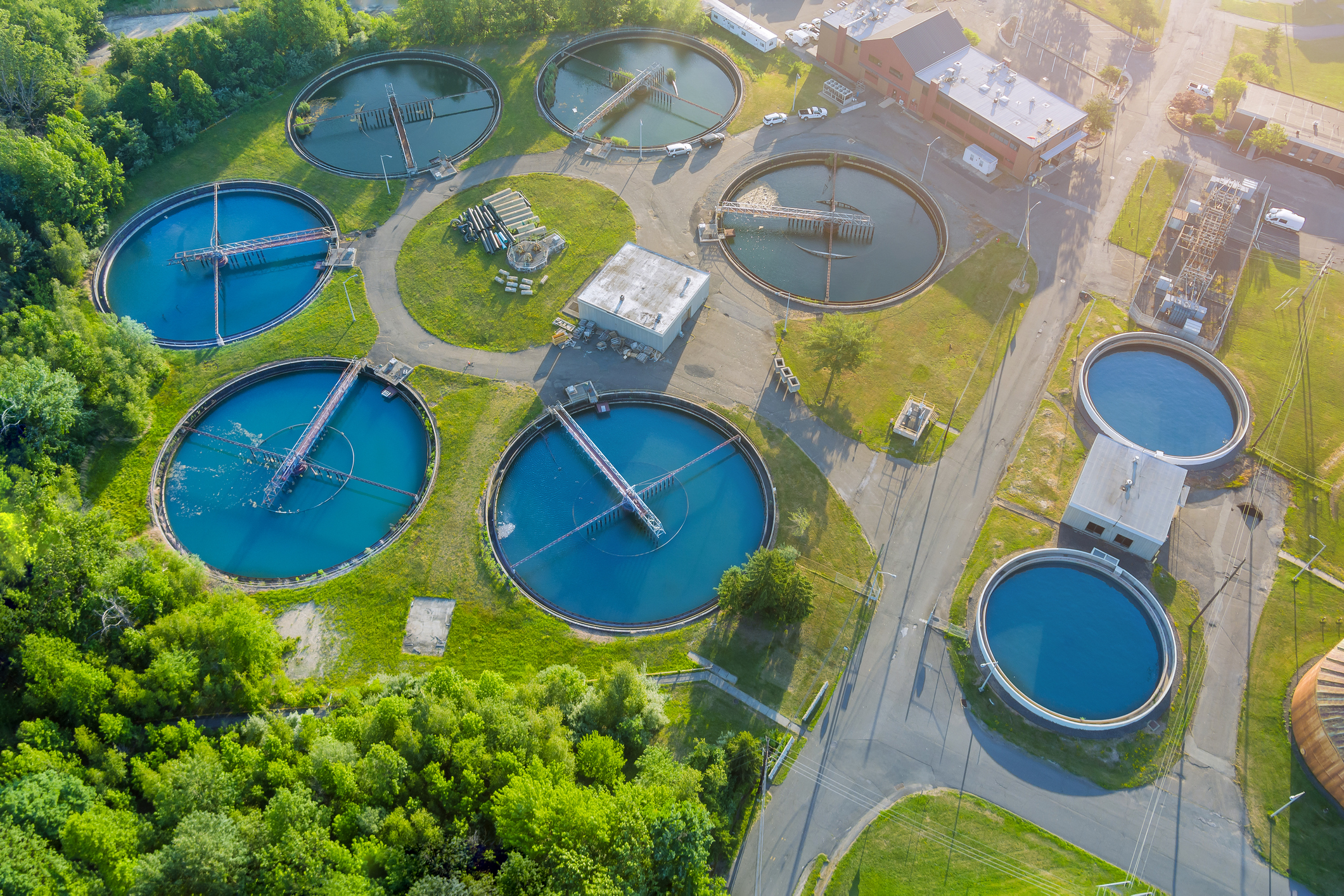
The increasingly complex landscape of state and federal activities on per- and polyfluoroalkyl substances (PFAS) creates challenges for each state to effectively address contamination and citizen concerns about the risks of these persistent chemicals. ECOS is working closely with its members, federal agencies, and other stakeholders to keep each other informed about policy and scientific developments, newly-identified sources and exposure pathways, and best practices for risk communication. These resources aim to inform states on activities and efforts happening at ECOS and across the country.
PFAS are a large family of synthetic chemicals used for a wide variety of purposes. In recent years, scientists have concluded that some of these substances can pose risks to human health and the environment across multiple media, including drinking water, surface water, groundwater, soil, air, and fish and wildlife.
ECOS PFAS Tools and Guidance

Examine PFAS Industry Data from Members
ECOS members have shared information on industries that use PFAS. We have compiled the information into an interactive table and collected links to other resources and considerations for evaluating further PFAS use in industries across the U.S.
ECOS Paper: Processes and Considerations for Setting State PFAS Standards
Updated April 25, 2024
In recent years, federal, state, and international authorities have established various health-based regulatory values and evaluation criteria for a number of specific per- and polyfluoroalkyl substances (PFAS) in response to growing concerns with contamination. In April 2024, the U.S. Environmental Protection Agency (EPA) enacted federally enforceable PFAS standards for five PFAS in drinking water. However, at this time, the U.S. has no federally enforceable PFAS standards for other PFAS or for these PFAS in other environmental media, leaving individual states to navigate various avenues for addressing contamination. Some states have established legally enforceable values (e.g., drinking water Maximum Contaminant Levels [MCLs]) for certain PFAS in drinking water, groundwater, surface water, soil, or air. Other states and regulatory agencies have opted for non-enforceable values such as guidance levels, screening numbers, or advisories that may apply to PFAS for which promulgated standards do not exist.
The Environmental Council of the States (ECOS) in 2019 compiled information on state PFAS standards, advisories, and guidance values. Sharing data and regulatory approaches helps federal, state, and international authorities avoid unnecessary duplication of efforts, as well as understand and communicate about differences in guidelines. This paper outlines ECOS’ findings on state efforts and considerations for future regulatory activities on PFAS. The document was initially published in February 2020 and updated in March/April 2021, March 2022, and March 2023. This April 2024 update reflects the addition of three states, two new subsections, and new regulatory, legislative, and scientific activities that have occurred over the past year. ECOS will continue to update it annually as appropriate.
Read the updated paper on setting state PFAS standards.
Notes as of April 2024:
- If your state has updated standards or would like to be included in the next update to this white paper (2025), please email Sarah Grace Hughes of ECOS.
- U.S. EPA’s Office of Water’s Standards and Health Protection Division houses the Agency’s Fish Advisory program, which supports states in their formulation and issuance of fish consumption advisories. In September 2020, staff in that program and in the EPA Office of Research and Development compiled an updated list of state’s advisory thresholds since ECOS’s compilation in the appendices of this white paper. That listing can be found here. Much of this information has been incorporated into Appendix F of the updated ECOS PFAS standards white paper.
ECOS Report: PFAS in Biosolids: A Review of State Efforts & Opportunities for Action
Published January 27, 2023
For years, states have been actively working to address per- and polyfluoroalkyl substances (PFAS) contamination in a variety of environmental media. One recent challenge is the management of solids, which may be contaminated with PFAS as a result of its discharge to sewer systems from industry, businesses, and households and subsequent accumulation in biosolids produced from municipal wastewater treatment processes. This challenge encompasses a variety of considerations about testing, disposal, treatment, migration to groundwater and drinking water, and potential uptake to crops and animals if land applied. As there is no federal regulation or guidance for PFAS-contaminated biosolids, it is currently up to individual states to determine best practices for managing these contaminated wastewater residuals.
The Environmental Council of the States (ECOS) in November 2022 collected information from state environmental agencies on policies, testing, research gaps, and risk communication challenges related to PFAS in biosolids. Thirty-four states responded to the survey. This paper outlines ECOS’ findings on how these states manage biosolids, and where opportunities exist for regulation, research, and risk communication.
PFAS Monitoring
Updated February 2024
When ECOS updated its white paper in 2021, some states noted that they monitor for many more PFAS than are actually regulated, and that it would be helpful to get a sense for PFAS that other states monitor for. ECOS began compiling a spreadsheet, and will update it regularly as it receives information from states. Please email Sarah Grace Hughes of ECOS to include your states’ PFAS monitoring lists.
PFAS Risk Communications Hub
In 2018, ECOS and ASTHO interviewed environmental and health agency staff from 13 states and developed case studies on their risk communication strategies and lessons learned for PFAS and HABs. Building upon lessons learned from this effort, ECOS and ASTHO in 2019 developed a clearinghouse of PFAS risk communication resources to help state environmental and health managers more easily collaborate and disseminate audience-appropriate information on chemicals of emerging concern.
Check out the case studies and other risk communication resources on the clearinghouse webpage on ERIS.
State Websites
- Alabama Department of Environmental Management
- Alaska Department of Environmental Conservation
- Arizona Department of Environmental Quality
- Arkansas Department of Energy & Environment
- California State Water Resources Control Board
- Colorado Department of Public Health & Environment
- Connecticut Department of Energy & Environmental Protection
- Delaware Department of Natural Resources & Environmental Control
- Florida Department of Environmental Protection
- Georgia Environmental Protection Division
- Hawaii, Department of Health
- Idaho Department of Environmental Quality
- Illinois Environmental Protection Agency
- Indiana Department of Environmental Management
- Iowa Department of Natural Resources
- Kansas Department of Health and Environment
- Kentucky Department for Environmental Protection
- Louisiana Department of Environmental Quality
- Maine Department of Environmental Protection
- Maryland Department of the Environment
- Massachusetts Department of Environmental Protection
- Michigan Department of Environment, Great Lakes, & Energy
- Minnesota Pollution Control Agency
- Mississippi Department of Environmental Quality
- Missouri Department of Natural Resources
- Montana Department of Environmental Quality
- Nebraska Department of Energy & Environment
- Nevada Department of Environmental Protection
- New Hampshire Department of Environmental Services
- New Jersey Department of Environmental Protection
- New Mexico Environment Department
- New York Department of Environmental Conservation
- North Carolina Department of Environmental Quality
- North Dakota Department of Environmental Quality
- Ohio Environmental Protection Agency
- Oklahoma Department of Environmental Quality
- Oregon Department of Environmental Quality
- Pennsylvania Department of Environmental Protection
- Rhode Island Department of Environmental Management
- South Carolina Department of Environmental Services
- South Dakota Department of Agriculture & Natural Resources
- Tennessee Department of Environment & Conservation
- Texas Commission on Environmental Quality
- Utah Department of Environmental Quality
- Vermont Department of Environmental Conservation
- Virginia Department of Environmental Quality
- Washington Department of Ecology
- West Virginia Department of Environmental Quality
- Wisconsin Department of Natural Resources
- Wyoming Department of Environmental Quality
Other PFAS Resources
PFAS News in the States
PFAS Documents from ECOS
PFAS Team
ECOS PFAS Member Committees & Actions
ECOS PFAS Coordinating Committee: Comprised of state environmental agency commissioners and their deputies or PFAS leads from 30 states and senior leaders from federal agencies including U.S. EPA, CDC/ATSDR, DOD, DOE, FDA, and NIEHS, this Committee meets via webinar bimonthly to discuss high-level updates and areas for coordination between state and federal partners.
ECOS PFAS Caucus: The Caucus is a group of over 250 state and other stakeholder participants that meets via webinar bimonthly to discuss a variety of policy-related PFAS topics.
Quarterly Coordination with State Media Associations: ECOS organizes quarterly coordination calls of state media associations, including ACWA, ASDWA, ASTHO, ASTSWMO, NACAA, NGA, APHL, and AAPCA.
EPA ORD – ECOS – ASTHO Science Calls: Organized in partnership with EPA ORD and ASTHO, these bimonthly webinars for states and other stakeholders focus on a variety of science- and research-focused PFAS topics.
ECOS PFAS Key Staff Members
Sarah Grace Hughes, Senior Project Manager, ECOS